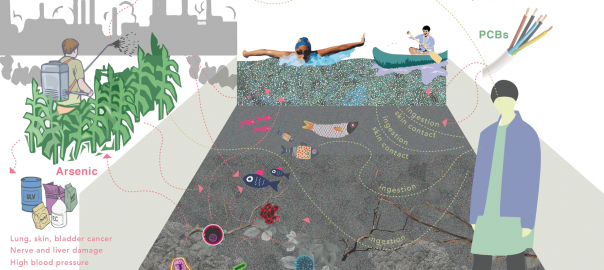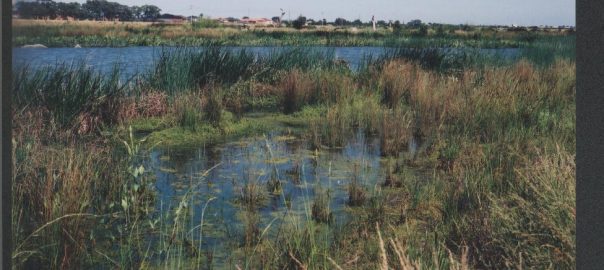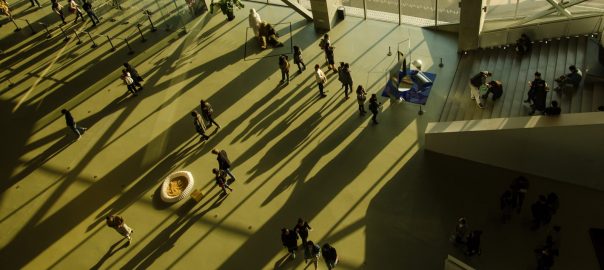Among the many important and moving messages in the film, one stood out in particular to me as relevant to my current work. It came later in the film, during the passages depicting the return of Mr Rogers to television audiences after the tragedies of September 11th, 2001. In the passage, Mr. Rogers says:
“No matter what our particular job, especially in our world today, we all are called to be Tikkun Olam—repairers of creation. Thank you for whatever you do, wherever you are, to bring joy, and light, and hope, and faith, and pardon and love to your neighborhood and to yourself.”
You can see the passage here.
For some reason, when I heard Mr. Rogers say those words, I thought of Aldo Leopold, who some would argue forever changed the way we view our ecological impact on the environment around us. In his essay “Thinking Like a Mountain”, Aldo Leopold wrote:
“We all strive for safety, prosperity, comfort, long life, and dullness … A measure of success in this is all well enough, and perhaps is a requisite to objective thinking, but too much safety seems to yield only danger in the long run. Perhaps this is what is behind Thoreau’s dictum: In wildness is the salvation of the world.”
To think like a mountain means to have a complete appreciation for the profound interconnectedness of the elements in a system. Was Mr. Rogers thinking like a mountain after 9-11? I was struck with the connection of this Leopoldian thinking and the concept of tikkun olam, in the context of something as horrible as 9-11. With these thoughts swirling in my mind, I wanted to better understand what Mr. Rogers was thinking when he invoked that Hebrew concept, and what it might mean to me.

According to MJL, Tikkun Olam (תיקוןעולם, Hebrew for “world repair”) has come to connote social action and the pursuit of social justice. The phrase has origins in classical rabbinic literature and in Lurianic kabbalah, a major strand of Jewish mysticism originating with the work of the 16th-century kabbalist Isaac Luria. Tikkun olam has been reinterpreted since the 1950s to mean that humans are responsible for the perfection and maintenance of the world. Rabbi Lawrence Troster, of GreenFaith: Interfaith Partners for the Earth, believes that originally tikkun olam was a minor rabbinic concept of amending laws for the betterment of the world. It was altered by Lurianic Kabbalah into a mystical doctrine of salvation, the human repair of the breach in the universe left over by the process of Creation itself. Thus, according to Troster, it became an “eschatological practice actualized in meditation and prayer”.
In his excellent essay Tikkun Olam and Environmental Restoration: A Jewish Eco-Theology of Redemption, Troster further argues that the use of tikkun olamin modern Jewish social justice theology creates an eschatology that sees human freewill, not divine action, as the chief means by which the world will be perfected, and then Rabbi Troster asks … “what do Jewish environmentalists imply when they use tikkun olam? What kind of Jewish environmental perfection are we seeking?” These are important questions, because even though we may see the repair or perfection of the world as merely a symbolic and non-literal goal, “the concept of redemption we choose will shape the way we seek to achieve it … while Jewish environmental theology has, in part, dwelt on Creation theology, little has been done regarding what a Jewish environmental theology of redemption would look like”.
This resonates with me as a midwesterner in the United States with a Judeo-Christian upbringing, in that faith-based understandings of nature tended to be of the “hath dominion” variety rather than “resident of a neighborhood called nature”. The concept of redemption we choose will shape the way we seek to achieve it.

Today the environmental movement is rightly criticized for presenting almost exclusively apocalyptic views of possible future environmental disasters, and is accused of failing to present positive visions of a sustainable world. Arguably, an exception could be be found in the work of the Civic Ecology Lab at Cornell University. Positive dependencies upon nature are rarely identified, and negative interactions are recycled and reified by news cycles and the internet. Yet, in Reinventing Eden: The Fate of Nature in Western Culture environmental historian Steven Pyne wrote:
“The real future of environmentalism is in rehabilitation and restoration. Environmentalists have told the story of the Garden of Eden and the fall from grace over and over again. But we haven’t yet told the story of redemption. Now we need to tell that story”.
Which brings me to one of the pillars supporting my own work. Aldo Leopold’s “Land Ethic” requires us to enlarge
“…the boundaries of the community to include soils, waters, plants, animals, or collectively: the land… In short, a land ethic changes the role of Homo sapiens from conqueror of the land-community to plain member and citizen of it. It implies respect for his fellow-members, and also respect for the community as such” — Aldo Leopold. A Sand County Almanac.
This land ethic, Troster notes, might contribute to a refinement or redefinition of tikkun olamas ecological restoration. Ecological restoration, as defined by Eric Higgs, is “the process of assisting the recovery of an ecosystem that has been degraded, damaged, or destroyed” (Higgs, Eric. Nature by Design: People, Natural Process, and Ecological Restoration, p. 110). Thus, ecological restoration must be a process, not simply an end product. It relies upon what Higgs calls a “genuine conversation” between restorationists and natural processes in order for it to function. This conversation ensures that the interests of both people and ecosystems are both deeply understood and appreciated; a social-ecological systems approach. This kind of conversation occurs when those people engaged in restoration take the time to fully understand the place as it is and “listen” to the ecosystem. As Higgs points out in the same book, “The loud, garrulous humans will always dominate unless specific attention is given to the soft-spoken ecosystem…”.
Thanks to Mr. Rogers and Rabbi Troster, I have a new way to think about my work to better understand how to amplify recruitment of citizen conservationists and resulting development and proliferation of a 21st century land ethic. As I have written often, this conservation ethic often emerges in places and time periods characterized by violence, conflict, disaster or war. So, my work often focuses on nature in “hot spots” or “red zones” such as both the time period and place of September 11th. Even in the aftermath of 9-11, Mr. Rogers maintained his fidelity to the principles that drove him: love your neighbor and love yourself. And, in invoking tikkun olam, he tied those principles to ecological restoration, restoration of the community as described by AldoLeopold. Holding Leopold’s notion of community in mind, how inspiring are the words of Mr. Rogers after September 11th:
“No matter what our particular job, especially in our world today, we all are called to be Tikkun Olam—repairers of creation. Thank you for whatever you do, wherever you are, to bring joy, and light, and hope, and faith, and pardon and love to your neighborhood (community, in the Leopoldian sense) and to yourself.”
Keith G. Tidball
Ithaca












I, too, have only recently re-discovered Mr Rogers, and the Tikkun Olam scene in the documentary was profound for me too. Thank you for connecting these thread and also providing links to more intellectual bread pertaining to these topics. It was Muir who said, “Few places in this world are more dangerous than home. Fear not, therefore, to try the mountain passes.” May we be brave enough to follow this advice. Thank you again.
Tikkun Olam was for centuries perceived as a social obligation within the community, giving charity, visiting the sick and disabled, caring for orphans and widows. It has gained a new and physical dimension by redefining “Repairing the World” in the spirit of environmental ethics. You visited the Gazelle Valley in 2012, when a team convened in Jerusalem to see how we could look beyond the city to its bioregion.
The Gazelle Valley, which we visited at the end of the workshop, opened its gates in 2015 as Israel’s first urban nature park. A herd of 30 gazelles, intensive bird life around the 3 natural lakes and close to half a million visitors a year, with no entrance fee, enable all of Jerusalem’s diverse communities to enjoy urban nature in the heart of the city. After fighting for years to prevent building in the valley, and then struggling to gain the funding needed to establish the park, for me the opening of the park indeed felt like redemption…..
Beautiful and unspiring, thankyou so much for writing it.